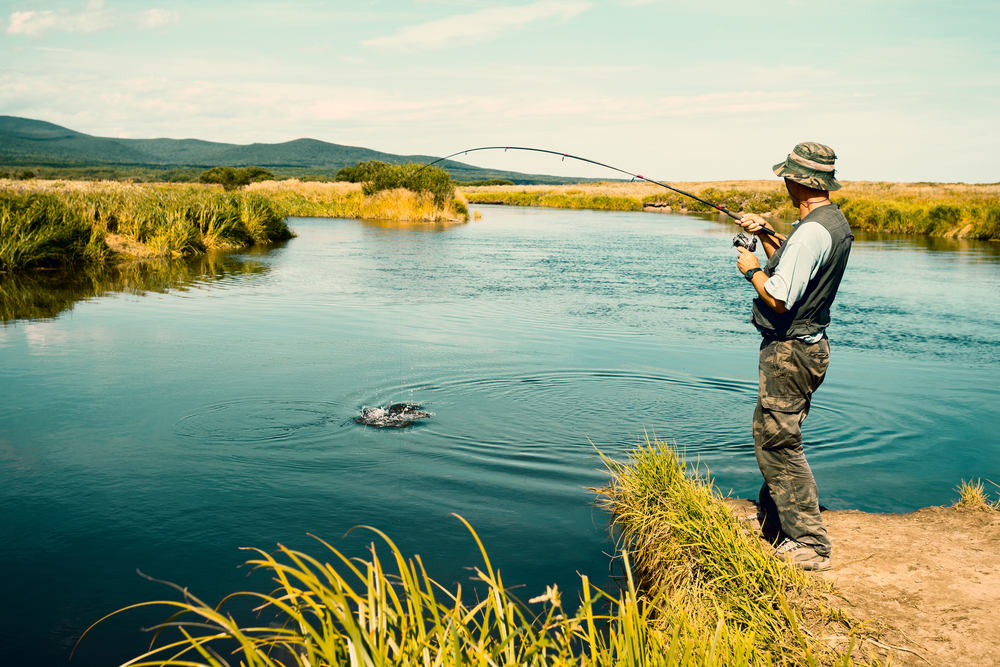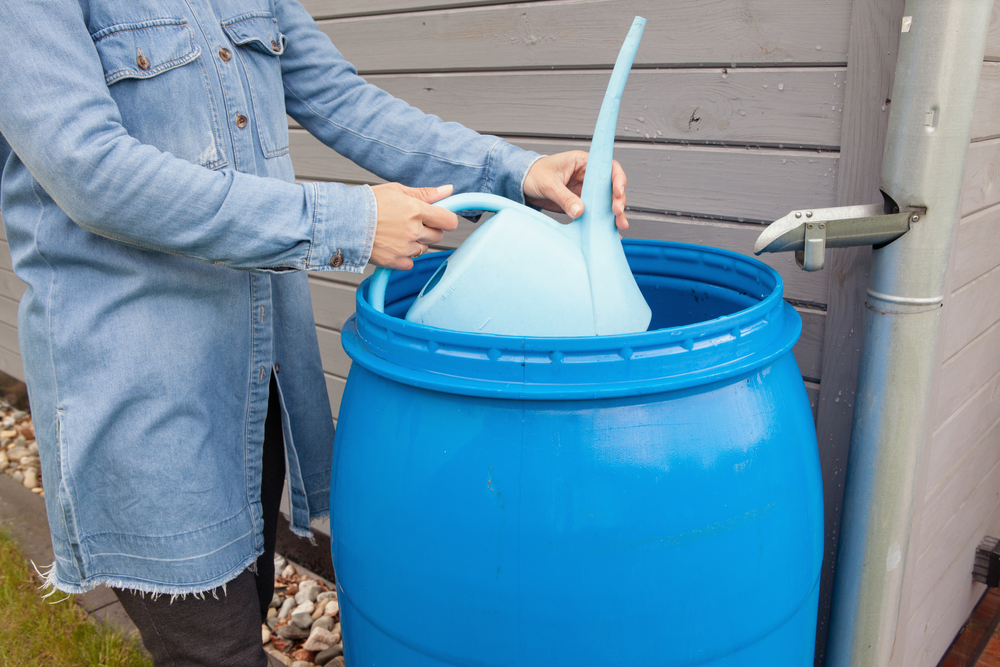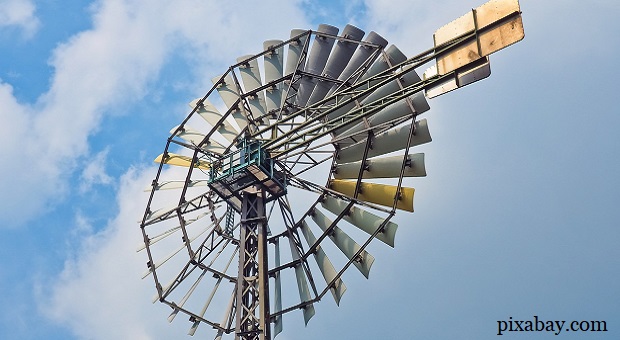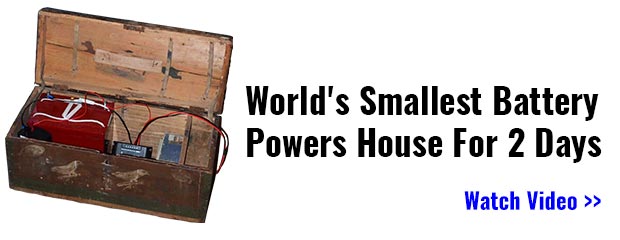By now everybody realizes that in cataclysmic SHTF event the number one ‘culture shock’ moment for unprepared crybabies will be no more electricity!
At first it will be more expected than anything else.
Many of us have been through a power outage from a bad storm or equipment failure at one time or another in our lives. But what if the electricity didn’t come back on again as it usually does, in the nick of time, just at about when our flashlight batteries start to die?
Or what happens when it might be months before power is restored by the regular power companies, and maybe not for years?
Puerto Rico STILL is without power in most areas after this summer’s hurricane! We then come to the critical understanding that it might be time to have an off grid electrical power set up to fall back on if we ever want to recover from a caveman lifestyle in a SHTF event.
The problem is that there’s so much information out there now that a lot of us are still confused about exactly what we really need to be ‘off grid’ and how to go about doing this. To help clear things up, here’s a quick general intro to everything you really wanted to know about an off-grid system but were afraid to ask!
What Exactly Does Off-Grid Mean?
I know everybody has an idea of what going ‘off grid’ means. But someone answered that for me once by saying, ‘Oh, that’s like being a mountain man and living off the land with only your horse, a knife, and your gun,’ she answered.
Well, not exactly. Living off the land with only a couple tools can be called being ‘off grid’ I suppose, but to me that’s more like being in a very basic emergency survival mode, living each day just to maintain your miserable existence with only your bushcraft and survival skills. To me this is more like a temporary survival exercise until you can get back to civilization!
Having a little more than just a basic stomach filling meal and campfire to keep you from freezing at the end of the day will get worse than boring after a while.
Because I guarantee you, bare bones 18 century homesteading won’t be anything like you are used to, or ever fantasized it to be, when you were enjoying your favorite Grizzly Bear chasing the HD cable movie, on your nice flat screen TV with a bowl of hot buttered microwaved popcorn in your comfy thermostatically controlled modern habitat.
Big Power Companies Will Unfriend You
Going off-grid in prepping means that you are not going to be connected to one of these major public power company grids any longer so you also won’t be paying them outrageous monthly electric bills which also allows them to install smart meters on your house, and spy on your personal habits.
It doesn’t mean you will be without electricity for the electrical devices you need and want because it’s hard to do much without electricity except waste your entire day trying to feed yourself and keep warm.
But instead you simply are going to become your ‘own power company’ and you will be your only customer. Well that sounds interesting?
This smart device will help you slash an excess of 70% off your power bill overnight…
Obviously your personal power plant is going to have to be scaled down a bit. It won’t use a giant turbine steam engine and certainly won’t be nuclear. You don’t need miles long railroad cars loaded with tons of coal to feed the boilers for your power plant.
All you need are batteries—proportionally larger than your radio, flashlights, and cell phone equipment uses, but still similar in fundamental operational principle– and a way to keep them charged long term.
A word of caution at this point because there’s a cornucopia of appealing cool ideas on YouTube for providing off grid electricity to your place. Everything from zero point energy to perpetual flywheel motion, but most of it is so complicated and produces such limited power for practical use if it even barely proves the concept that these are really just experimental ideas and won’t really work for your survival purposes at this point in time.
The standard tried and true off grid power systems almost invariably use a combination of battery banks and solar/wind power. Even a scaled down battery and charging system for just your own personal house, won’t be ‘dirt’ cheap as most of advertisers seem to be implying.
A complete standard home electrical system converted to complete off grid power is averaging less in total cost than it was a few years ago but it still can be out of reach for most of us ‘Po Folks’ who can’t just casually lay out several thousands of ‘dead presidents’ (a.k.a. dollars) for a professional whole house commercial conversion.
But if you just intend to set up electricity for your smaller bug out location shelter which might be a tiny cabin, or travel trailer, or even a heavy duty tent like a yurt, with off grid electrical power, that’s a different and much more affordable, story.
All you need to do first is look up at the sky and find out how many days out of the week you are likely to average peak full sunlight hours. Because, again, the most common and least expensive way for small off grid applications is to use ‘ol sun to charge your batteries with solar panels.
This is so you can then start to plan how many batteries you might need, or if you might need additional battery chargers like a windmill or a small gas generator which is what many people use for a temporary outage anyway all by itself if they think ahead to store enough gas for it properly.
But if we’re talking long term survival and power needs at the BOL, we want something that lasts a long time without a lot of headaches. To put it simply your location has a lot to do with just how you balance and put together your system in terms of batteries and charging systems and solar panels.
And to keep the system cost effective, all these components become a trade-off depending upon your location and of course your power requirements.
You Can Do It Yourself!
First of all, you’ll save yourself a lot of labor money if you want to DIY and there’s all kinds of internet tutorials and books and quick guides out there.
You’ll also learn valuable useful knowledge about electricity and it’s really not hard even if you’ve never done it before. And then afterward, you can pay an electrician familiar with solar off grid set ups a one time relatively modest inspection fee to check it out for you.
So, here’s the bargain basement basics just to get you started.
“Watts” Up With That?
It all starts with WATTS! Think of it as the resulting amount of vibrating microscopic atomic electrons which can be manipulated and transformed into the electrical current ‘juice’ that powers all the plug-in stuff.
Your electrical wiring in your house has to carry electrical power to feed these watts to feed all of your electrical stuff and when you plug in the particular device just takes/draws out the amount of watts it needs to operate.
This is the electric ‘currency’ on a power system. Everything you have that uses electrical measures that usage in Watts. You pay you’re your utility company for what they refer to as Kilowatt Hours used.
Every tag on the back of every appliance tells you how many Watts your gadget needs to do what it’s supposed to do. Microwaves from 600 to 1100 watts on average, lightbulbs 30 to 200 watts on average, refrigerators and appliances between 2 and 6 hundred, and so on.
Determining how you get the amount of Watt power you want for your needs and deliver them to your home through a combination of Amps and Volts are part of the common formula, Watts=Volts x Amps.
Because volts, which is the electrical energy potential measurement in representing the electrical ‘forces’ factor which provide ‘pressure’ to move the electrical energy around the circuits through conductors which are the common types of house wiring you see everywhere.
Voltage potential can be stored, like in batteries, or generated constantly by electrical generators which are basically magnets that generate vibrating atoms to cause their protons and electrons to ‘energize’ through movement and then ‘flow’ a distance to another point through conducting wires for power use on that end.
Then we have Amps in the formula.
Amperage has to do with the ‘rate’ of the electromagnetic ‘flow’ in an electrical conducting wire. This one’s pretty easy to do an analogy for, just like a skinny garden hose trying get enough water (electrons’) to take care of a large burning building is not going to work, neither is a thin electrical wire enough of a conduit to provide enough watts to power a huge office building.
You have to balance the capacity of the wires to handle electrical ‘loads’ for optimum utility.
The Watts= Volts X Amps math can be used to determine all combinations of batteries and wiring sizing you will need to give you your necessary watts.
Remember that batteries eventually run out of stored potential energy and then must be re-charged. So, the charging system and wiring components then make it a bit more complicated, but not insurmountable for the average handy person.
Let There Be Light!
Okay, you decided that for now that you could survive comfortably in the middle of the wilderness in your survival shelter with around 1500 continuously available watts.
This means you can have on a couple 100 watt light bulbs, or a few 60 watt bulbs instead, a computer, TV, radio, and electric refrigerator, and even a microwave all on at about the same time before possibly overloading the system, and tripping the circuit breaker.
This would be only one 20 amp breaker on one main 12 gauge wire in your hard wired house system off the inverter, to split up between your mini-grid appliances and outlets, (unless you just temporarily ran a couple heavy extension cords directly off your inverter.)
So with this set up you’d be living about like they did in rural areas about 75 year ago with their electrical systems where ‘out houses’ were common and outside hand pumps into buckets brought the water in, until electric well pump motors were gaining popularity so indoor plumbing eventually became the norm.
But there were few, if any electrical washing machines and dryers or electric kitchen counter tops and heating was still virtually all done with fossil fuels.
So you want to figure out how many batteries you need for continuous 1500 hundred watts application for at least a couple days, but preferably a week of basic power before draining, and needing complete recharging if the sun or your solar panels don’t work to keep your batteries charged up. You want to keep them above 60 percent capacity during use to preserve their lifespans. Too many complete discharges/cycles are not good.
If you do live in an area where it gets so cloudy and dark that you often can go for many days without seeing the sun, then you will want to have a small wind generator to keep up the charge along with your solar panels, or a back-up portable gas generator.
There’s plenty of DIY projects on building wind turbines too, or you can get ready made commercial models. Here are some of them, to ease your research.
So having only one 12 volt deep cycle/marine battery which is not much bigger than a standard car battery but that lasts a bit longer between charging that on average says generates 675 amps and also says it gives you 100 amp hours at 20 hours, with different numbers here depending on the type/brand of battery, which is another confusing measurement of how long your battery lasts without charging before it goes dead, and is a little deceiving for practical purposes.
What you have to do is divide the 100 Amp/hour number by the other ‘@20 hour’ number to get 5 amps (to use in the equation for watts) of continuous amperage for the entire 20 hours before it drains and is discharged.
So now let’s solve for watts when watts = volts x amps. so 12 volts x 5 amps equals a whopping 60 watts. Yup, that doesn’t seem like much and sure is long way from 1500 continuous watts at one time? You can power maybe one 60 watt lightbulb for up to 20 hours. You can also power that lightbulb directly from a 60 watt solar panel on a sunny day.
Or a windmill that puts out the same wattage when it’s running at speed. All these work together on a system to cover all weather contingencies. But the ‘load’ is mostly on the batteries because they don’t care what the weather is as long as they stay charged.
However, for shorter time periods the battery can actually deliver more of the ‘cranking’ amps in its capacity and therefore more watts for a shorter time.
That’s how your single car battery starts your car’s powerful electric starter motor which needs a lot of watts and amps to crank over the gas car engine. 450 cranking amps X 12 volts is like around 7400 watts!
However, If you crank for more than a few minutes straight, you’ll usually wear down and kill the battery. And of course this energy/power trade-off is why if you accidentally leave your headlights on overnight you can’t start your car the next day because that usually pushes the 20 hour limit with only 5 amps per hour draw.
A single battery might work for a very short time for high energy needs up to a point, but not that well for extended off grid use.
The device that handles all these variables is called a power inverter. It changes 12 volt battery current to the AC (alternating current) that Tesla invented which is what is typically used in virtually all of our house and commercial electricity systems today.
You need this inverter off your 12 volt battery system because typical home wiring also uses 120/240 volts of power energy from the big power line service entrance to your house. So your TV, refrigerator, etc. is not set up for DC (direct current from the battery) and has to be ‘inverted’ to AC. The inverter changes the 12 volt battery mode to the 120 AC mode so you can just plug in your AC appliances right into the inverter with extension cords if you want. This makes the wiring for your off grid is not that complicated at all for basic purposes. It’s just like plugging into a wall outlet.
Video first seen on Power Inverters.
You find inverters at Home Depot, Amazon, and even Walmart. You can get a 1000 watt basic model for about 35 dollars or a better 2000 watt sine wave model with battery voltage gauge and charge controller for around $250.
If you just want something already to plug and play, there are quite a few portable off grid units that can be purchased ready to go, complete with folding solar panels and portable carrying case. Some of these, as expected, are a bit pricey.
But some are good deals if you have no inclination to put together your own system from components!
Separately an average new deep cycle 12v battery from Home Depot is around a hundred bucks. Solar panels are sold online for about a dollar a watt.
So you can still have your 1500 watt off grid power set up as long as you’re not burning up all 1500 watts continuously when there’s no wind or sun, which you never really would have to do when you think about it. You could get away with a basic setup of just maybe two or three batteries, a hundred watt solar panel to start with, and/or a small wind generator for charging and a cheap inverter, all for around a thousand dollars right off the commercial shelf.
If you are handy you can follow the instructions and build your own, and even your own wind turbine and solar panels for much less! This might sound a bit complicated at first, but after you get into it more, it’ll be no more difficult than changing the battery and cables on your car.
Start Small and Grow as You Become More Enlightened
For preppers who just want their bug out location or even their main residence to have basic off grid power, it’s a lot easier and much cheaper than you think if you start by getting one of these step by step detailed guides like this one here:
And then you expand as your resources permit if you want. It’s not hard to find decent used junkyard car or golf cart batteries and refurbish them for just a few bucks each and simply keep adding them to your battery bank for longer duration power potential.
So the answer to the question of what is the best off grid power system for a wilderness application, the main qualification will be the least expensive and the simplest, which will be something along the lines of what was just described here.
Your bug out location, even in the wilderness, doesn’t have to be a sensory deprived punishment sentence with miserable primitive living conditions. You can still have a decent comfortable modern electrical power setup for a relative bargain.
And why not? It’ll be bad enough otherwise trying to survive a grim long term scenario.
Modern electrical ‘work’ assistance from electricity will help you concentrate more on other necessary things like security and supplies. Maybe even watch Zombie movies from your VCD library once in awhile…to relax!
This article was written by Mahatma Muhjesbude for Survivopedia.














































































Interesting ideas. Power conversion was the only really new content.
Hi, Before people start to put an off grid power system together you need to think about some things. This is a good article but there are problems with it unless you are using it all the time for other things. The big problem with off grid systems is the batteries, they cost a fortune now and they only work for a few years before needing to be replaced. To get the most power out of your batteries use 6 volt deep cycle batteries wired together to make one big 12 volt battery, deep cycle 12 volt batteries don’t last anywhere near as long and car batteries are not meant to be drained at all, they are meant to stay charged all the time for just starting your car. The system you put together needs to be used all the time to keep it good, if you only put a system together for just in case of an emergency it probably will not be working when you need it. In the winter the sun does not shine as long, in some places your lucky if it shines for 9 hours and the wind does not blow all the time so it might be hard to keep those batteries charged. No matter what the way is that you charge your batteries it take hours to charge them all the way back up and if you are using the batteries at the same time as charging you may never charge them all the way up unless your system is big enough to do all of that at once.
India has a great idea. You can find plans to build an outhouse that makes methane of your wastes. one small family produce enough for cooking and a light at night, and it’s peasant proof. The concept is over a century old and they’ve perfected it, so far as I see.. Only problem for you folks up north, you’ll need a way to heat it (underground for insulation) or it slows ‘way down.
Robert, a lot of battery engineers would disagree with you about using 6 volt batteries which are currently more of a leftover from a past era when electrical voltage had lesser requirements? IOW, there’s really no huge difference when you consider in ALL the factors and the new specifically off grid designed 12 volt batteries v. 6 volt deep cycle.
And the idea-, as mentioned in the article -is NOT to let your batteries go to full discharge at all by having a system that is constantly delivering a maintenance charge.. This is why, again, depending on your location, power use, etc.,, you would go with different solutions. for whatever your needs are? and of course your budget.
I know a wealthy prepper who even has a hydrogen fuel cell back up for his power system. And apparently this might now be worth looking into also as the prices for small units may have come down to peon affordability?
Yes I might be a little out of date, I am not sure what is available now in the line of batteries but what I have researched on the batteries designed for off grid systems does not impress me, they are all way expensive, I called and talked to a solar company here where I live and asked about the batteries, one good thing is that most of them are dry cell;s that need very little to no maintenance but they only last about 4 years. There are some batteries that are just 2 volt batteries that you put as many as you want together to build your battery bank. Companies here in the US sell them as a US product but they are made in China and do not perform as advertised. Yes I am old school, I have used the 6 volt deep cycle batteries for many years, I use them in my camper , 4 batteries as one big 12 volt battery with a 1500 watt INVERTEr, went on week long camping and hunting trips powering not only my camper but other campers in our group when there systems had failed. Had the power go out a few times and I just ran cords into the house to run fridge, freezer, furnace, TV, lights and the batteries never ran down more than 40%. I have only replaced the batteries twice and each set lasted 9 years before they started to give me trouble. They were the Exide 3600’s as long as I kept them charged and the water level up they performed fantastic for me. Now granted I am not trying to live off grid so things will be different for those that are. I will say one thing here on the subject of going off grid just to stick it to the power company. Sorry if I hurt anyone’s feelings here but that is just stupid! By the time you spend all the money on a system and then all of the maintenance and repairs of that system you might as well have just kept paying your power bills. and not have the expense and head ache of running your own system. Some places it may be worth it because the power companies in those areas are very greedy but here where I live they are not.
Robert, my writing style is always sarcastic but no one goes off Grid (or shouldn’t at least) Just for the sole purpose of sticking to the big power companies? Because you’re right about cost effectiveness factors in terms of comparisons. Especially a few years ago. But now that’s changing pretty rapidly, If ever you get the chance go to one of those energy fairs that most states have once a year, you’ll be surprised at how problem free and cost effective some of these systems are now. I’m waiting for them to come out with a single family dwelling hydrogen fuel cell system unit.
And remember this article was about a basic set up for a survival environment. For a time when there will be a likelihood of NO big power companies to stick it to? A DIY system will by the ONLY way you’ll be able to watch your favorite sports game on T’V. Or at least recorded past versions of it.
For light, use LED replacements instead of incandescents. fluorescents, and halogen lights. I bought LED bulbs that are the equivalent of a 100 watt incandescent that consume 14.5 watts. You can use 75, 60, and 40 watt equivalent where less light is needed, to save even more energy. Although lighting doesn’t pull as much load as most energy users in the house (electric stove/oven, air conditioning, electric heat, electric water heater), it will reduce your consumption nonetheless.
LEDs also last much longer, a benefit when replacements may be scarce.
Avoid buying LED light fixtures with a proprietary lamp style. If the LED lamp goes bad, it can be hard to find a replacement. Instead, use the incandescent replacement bulbs that screw into a standard base, and keep a few spare bulbs, just in case. You won’t have trouble finding replacements (even if not LED), and you might can use the spare bulbs to barter with.
Good reminder William, Yup that’s another factor to seriously consider LEDs for a small survival off grid set up. Highly efficient lighting and other energy efficient appliances. If you live in a warmer climate they have refrigerators (mostly used in RVs) that operate both on electricity AND propane and can auto switch between them. So you can back up with your propane tank so your food won’t spoil while you repair/maintain your system if needed.
Off grid INCLUDES SO MUCH, THE SUBJECT ITSELF NEEDS SOME DEFINITION JUST TO PROCEED. I am currently renovating some lake property I bought for my version of off grid life. The house is in the rework stage, where I am adding modern windows and significant insulation upgrades. I intend to heat and cool the place using harvested power. I will begin with solar and wind, into a 20,000 watt battery system of li-ion batteries of my own design. I have located a pair of mini split heat pumps that draw 900 watts each. The cells i have picked, for the 24 vdc battery packs are 18650 li- ion cells since they are the most common. Since they are well able to provide 10 watts, i need 2000 individual cells stacked in 24 volt banks; leaving me with about 300 paralleled batteries. These will go in 10 5 gallon plastic nuckets that will be filled with antifreeze, and buried for heat dissipation. I have approx 600 pf these cells so far that I have recovered from laptop battery packs that I buy for recycle cost from several computer stores. Get creative, off grid does Not have to mean bairly surviving, i intend to thrive off grid, by daily choice, and not for emergency response. Ironically, the property is currently grid connected, but I intend to initially wire them in as back up, until I have the full system running, then i will either disconnect them entirely, or sell them the excess power instead of using dump resistors. I have no doubt that the power company will hate me, but the very thought makes me smile. I am rewiring the house to run directly off the 24 volt batteries, as well as inverters for 120volts. stay careful, electricity can kill.
HOORAH Bill!, make sure you can back up that wind generator with a spare if you can because that’s really the only problem with wind turbines besides there not being enough average wind in the area or aerodynamic design optimization to garnish relative wind max volumetric dynamics–the higher possibility of destruction from TOO MUCH wind, or getting blown up by lightning strikes from all this Frankenstein Weather Geoengineering they perpetrate without our permission.
I intend to build a vertical axis machine after it is all running well. All energy production is risky, but withcare, it can be rewarding! Good luck on you own project fun!
WOW, Toby, sounds very cool and innovative. I’d like to see that! The more I hear about efforts like this the more faith I have restored that maybe we’ll beat the coming totalitarian monster after all?
It is coming together slowly. With the batterise I have salvaged so far, I have enough for basic power. I will wire in a TMOS Power Fet under each battery stick, which will allow me to cut out single battery sticks, electronically, if they drop below my minumum safe voltage. I will be able to pull that stick, if it is weak, so I can test the cells for the failing cell and replace it. If they are treated right, they will last for 15,000 full cycles. I also will have a backup gasoline generator, if I am working on the system that will provide 4000 watts charge through two power supplies . I still need to buy the wind generator and what batteries I do not foin before I need them, the rest of the system is here.
On the monster, that is why I am moving to the lake, LOL! I intend to thrive in spite of this! 🙂
HELLO ! Ref. to Robert Frisby – Wind Generators are the ONLY way to go – I F – You have LOTS of Wind – I DO ! My 12′ Dia., 3 Blade will produce about 1500 – 2000 Watts – Nearly Constantly. I live on the Northern Edge of the Great SW Desert – Rim Rock along the Snake River. Wind Averages about 15 Knots or so – with few calm days. I have a 20 Year old Gas gen (5000 Watts) which I Only Run to Play “Catch-up”. My Battery Bank is old Golf Cart Batts which are reconditioned. I laugh at people raving about Photo-Voltaic Cell banks – only works from 7 am to 7 pm in july – and 10 am to 3pm in December – ONLY WHEN the Sky is crystal clear ! I’m at 45 Deg North Latitude. The Wind blows at night, too – and cloudy or not. Lighting is the Last thing you should worry about. Major maintenance is for Batts and Gas / LPG Engines. Go for it ! Bill
Hey Carmela, Nice tutorial. Actually, I have used lots of flashlights, but never created myself. Now, thinking to create a custom flashlight. Your tutorial easy to follow and will try to make a new flashlight.
Hi, all. Don’t know why all CAPS…Oh well. My wife and I live in sw nm at an elevation of 6200 ft. In 2009 we (diy) installed a 7.5 kw solar system on trackers. It paid for itself in 4 years! Our system is a complete stand ALOne with both a large battery pack and 3 neat windmill chargers. We are tied to the grid but with the simple switch can remove the grid. We frequently have hours long power outages that we often don’t even know ABOUT unless we look outside (assuming it is dark thirty). Very nice system that i am very proud of. I have been in “co-generator” status since the system was new. I use about 1500 kwhrs/month and pay $0.00/month. The power company sends me a check each month for the power i push back into the grid (by the use of a formula). So, i pay $0.00 for power and get a check from the company that varies from $75-$80 to $130-$150 per month. I pay very little attention to my power usage because i DON’T have to. I weld quite a bit and have a machine shop too.
Thank you mr. Sun for ~ 1 kw per square meter of which we can use about 200-250 kw.